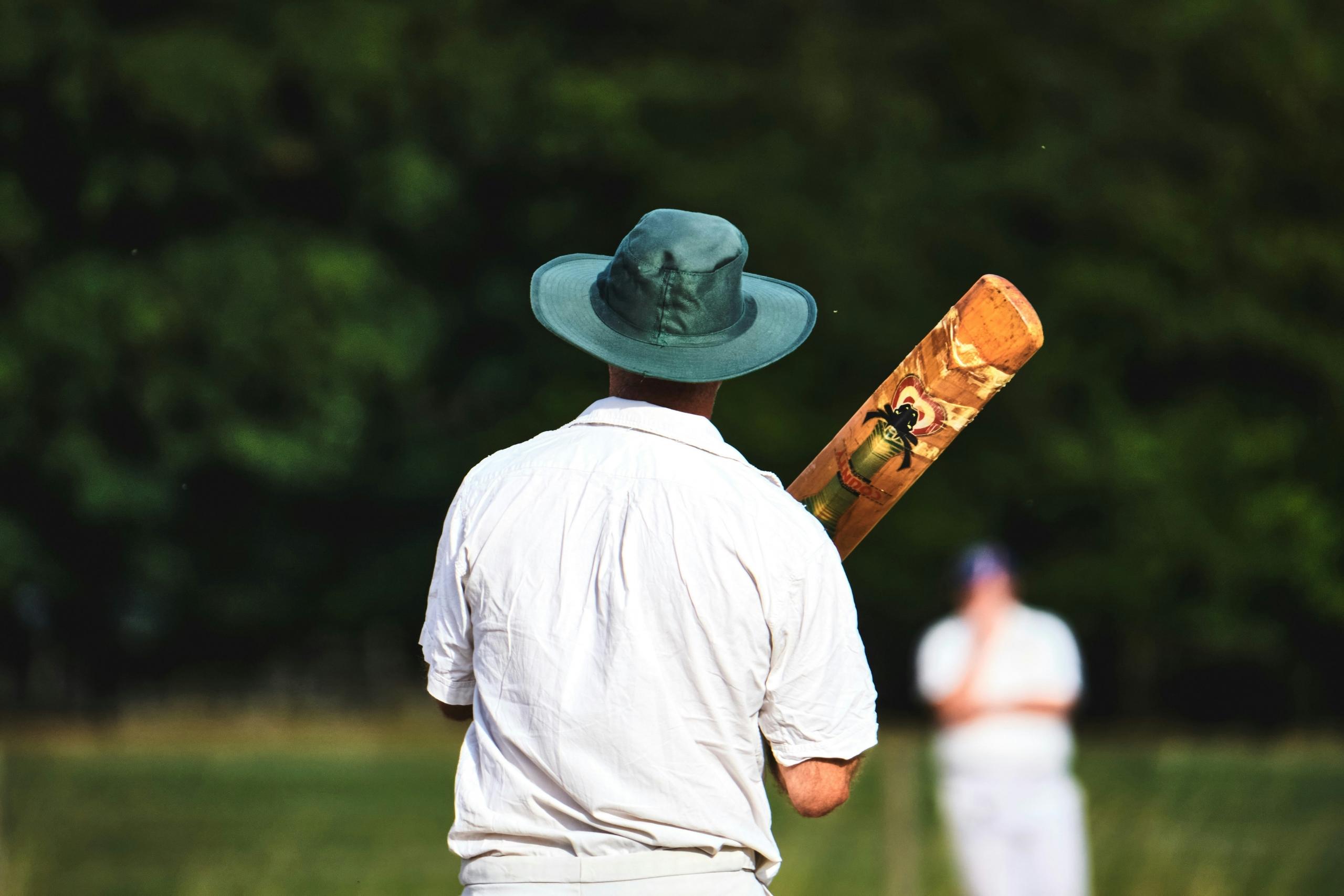If you're wondering how many players in a cricket team and what is Duckworth-Lewis, then read on as we dive into the world of cricket.
Cricket is often referred to as the "gentleman's game," a title that has been associated with the sport for many years. The term reflects the values and traditions that have been ingrained in cricket culture, emphasising sportsmanship, fair play, and a sense of honour on and off the field.
The real beauty of cricket lies in the battles we fight on the field, the friendships we make off the field, and the memories we create together. Zaheer Khan
Here are the essential elements of cricket, that have helped inspire passion for the game over centuries:
- Code of Conduct: Cricket has a well-defined code of conduct that players are expected to adhere to. This code emphasises fair play, respect for opponents, and upholding the spirit of the game. The idea is to promote a sense of honour and integrity among players, which aligns with the qualities traditionally associated with a gentleman.
- Upholding Tradition: Cricket has a rich history and a long tradition, dating back several centuries. This history has contributed to the development of a set of unwritten rules and customs that govern the game. Players are expected to respect these traditions, contributing to the perception of cricket as a sport with a refined and honourable culture.
- Sportsmanship: The concept of sportsmanship is deeply ingrained in cricket. Players are expected to compete fiercely on the field, but at the same time, they are encouraged to show respect and courtesy to their opponents. Displays of aggression or unsportsmanlike conduct are generally frowned upon, reinforcing the idea of cricket as a gentleman's game.
- Spirit of the Game: The spirit of the game is a crucial aspect of cricket, emphasising the importance of playing the game in the right way. This includes respecting the rules, accepting umpire decisions gracefully, and acknowledging the efforts of opponents. Players are encouraged to prioritise fair competition and mutual respect.
- Etiquette: Cricket has its own etiquette that players are expected to follow. This includes shaking hands with opponents at the end of a match, acknowledging a good performance, and refraining from excessive celebrations that may be considered disrespectful.
- Off-field Behaviour: The expectation of being a gentleman extends beyond the cricket field. Players are often regarded as ambassadors of the game and are expected to conduct themselves with dignity and integrity in their personal lives. This emphasis on off-field behaviour adds to the perception of cricket as a sport for true gentlemen.
While it's essential to recognise the positive values associated with cricket, the term the gentleman's game has also faced criticism for being outdated or exclusive. However, the ideals of fair play, sportsmanship, and respect for tradition remain integral to the essence of cricket, contributing to its enduring reputation.

Where Does Cricket Originate From
Cricket originated in medieval England during the 16th century. It evolved from earlier bat-and-ball games, and first gained popularity among rural communities.
The first recorded cricket game took place in the 17th century.
By the 18th century, cricket had become a popular sport in schools and villages. The Hambledon Club, which was established in the 1760s, played a key role in codifying the game's rules.
Cricket's popularity later spread to the British colonies —such as South Africa, Australia, and the West Indies— contributing to its global expansion.
Over time, it developed into a sophisticated sport with various formats. The three formats of cricket played at international level are Test matches, One Day Internationals (ODI) and Twenty20 (T20). Today, cricket stands as one of the world's most beloved sports.
How to Play Cricket
In cricket, as in any other profession, hard work, dedication, and determination are the keys to success. Yuvraj Singh
There are several formats of the game of cricket, and each has its own nuances, but these are the essential rules and concepts you need to know:
- Pitch: Cricket is played on a rectangular 22-yard-long pitch with stumps at each end.
- Teams: There are 11 players on each team. In a game, one of the two teams bats while the other fields.
- Coin Toss: Before every match, a coin is tossed, and the winning captain decides which team will bat or bowl.
- Innings: An innings is a complete round of batting by a team. Each team gets to bat and bowl in the match. There are up to four innings in a test match, where each team gets to bat twice —although this may not always be the case. In a limited overs match like a T20 or ODI, there are only two innings.
- Wickets: Wickets are made up of three stumps, which have two smaller sticks, called bails, on top. In a game, the bowling team aims to dismiss batsmen by getting the bails off the stumps.
- Runs: Each run between the wickets scores one run. "Boundaries" are scores of 4 or 6 runs which are awarded if the ball crosses the boundary rope on the ground or in the air.

- Extras: Extras are runs given to the batting team without a batsman hitting the ball. Examples of extras are no-balls, wides, and byes.
- Dismissals: Batsmen can be dismissed in various ways, including being bowled, caught, leg before wicket (LBW), run out, and stumped.
- No-Balls: The batting team gets a free hit on the next bowling delivery if there is a no-ball. No-balls are often the result of the bowler overstepping the front line.
- Wides: Wides are deliveries that are too wide for the batsman to play. The batting team is awarded extra runs for wides..
- Leg Byes: If the ball hits the batsman's body or clothing and not the bat, the batsmen can score runs called leg byes.
- Fielding Positions: Players are assigned specific fielding positions, such as slips, gully, mid-off, mid-on, and deep fine leg, to strategically position themselves during the game.
- Over: Six legal deliveries make up an over, after which the bowling end switches. Bowlers have a maximum limit of overs they can bowl in any innings.
- Powerplays: Limited-overs formats have powerplays, which restrict the number of fielders outside the 30-yard circle during specific periods.
- Duckworth-Lewis Method: In rain-affected matches, this method is used to adjust the target score for the team batting second. It is regarded as one of the most confusing aspects of cricket by many supporters!

The Different Formats of Cricket
These are the main differences between the three main formats of cricket:
Test Matches
Test matches are played over five days, and do not have a fixed number of overs per side. They require players to demonstrate patience and a strategic long-term approach, and usually have a lower scoring rate than T20s and ODIs.
One Day Internationals
ODIs are played in one day, and consist of 50 overs per side. This format of the game requires a balance between aggression and stability, as teams chase victory.
Twenty20
Like ODIs, T20 matches are played within a day. This is the shortest form of the game played at International level, and consists of only 20 overs per side. Due to the dynamic nature of the T20 game, batsmen aim to score quickly and often produce innovative shots.
Notable Cricket Players From Around the World
Many cricketers have left their mark on the game, inspiring generations of players worldwide. Here is a selection of famous cricket players and their contributions to the sport.
Sir Ian Botham
A legendary English all-rounder, Sir Ian Botham played a crucial role in England's cricket history during the 1970s and 1980s. Botham was known for his aggressive batting, effective bowling, and leadership qualities.
Sir Don Bradman
Widely regarded as the greatest batsman in the history of cricket, Sir Don Bradman played for Australia in the 1930s and 1940s. His staggering batting average of 99.94 remains unmatched, and he is often referred to as "The Don".
Sir Garfield Sobers
Hailing from the West Indies, Sir Garfield Sobers is considered one of the greatest all-rounders in cricket history. His exceptional batting and bowling skills made him a formidable force on the field, and he played a crucial role in the West Indies' dominance during the 1960s and 1970s.
Sir Vivian Richards
Another West Indian cricket legend, Sir Vivian Richards, was known for his aggressive and flamboyant batting style. A key member of the West Indies team in the 1970s and 1980s, Richards was a dominant force in international cricket.
Sachin Tendulkar
Hailing from India, Sachin Tendulkar is one of the most revered and prolific batsmen in the history of the game. With numerous records to his name, including being the highest run-scorer in international cricket, Tendulkar is often referred to as the "Little Master."
Brian Lara
Brian Lara is regarded as one of the finest left-handed batsmen in cricket. He represented the West Indies, and holds the record for the highest individual score in Test cricket, with an impressive 400 not out against England in 2004.

Shane Warne
Shane Warne is considered one of the greatest spin bowlers in cricketing history. The Australian's leg-spin and ability to trick batsmen have made him a match-winner for his country.
Ricky Ponting
The former Australian captain led his nation to numerous victories, including two World Cup triumphs. He is an expert batsman, who has scored over 13 000 runs in both Tests and ODIs.
Wasim Akram
Wasim Akram is regarded as one of the greatest fast bowlers in cricket history. He took 414 wickets in Tests and 502 wickets in ODIs for his country Pakistan, and is known for his deadly pace, swing, and ability to perform in crucial moments.
Local Legends on the Oval
South Africa is not short of its own cricketing greats, and here are just a few of them below:
AB de Villiers
AB is known for his innovative and explosive batting. He is regarded as one of the game's most versatile and entertaining players.
His ability to play unconventional shots and adapt to various formats of the game has earned him a reputation as one of the modern greats.
Hashim Amla
Hashim is an elegant and stylish batsman, and has been a cornerstone of the Proteas batting lineup. He is renowned for his composure and prolific run-scoring, and holds the record for the highest individual score by a South African in Test cricket.
Makhaya Ntini
Makhaya broke many barriers as one of South Africa's first black cricketers. He was a dynamic fast bowler, whose raw pace and ability to consistently trouble batsmen made him a vital asset to the South African team.
Dale Steyn
Dale was a fearsome fast bowler, who was a consistent wicket-taker for the Proteas. He is known for his rapid pace and ability to generate swing and seam movement, Steyn is SA's all-time leading wicket-taker in Test cricket.
If you're feeling inspired by Makhaya Ntini, Brian Lara, or any of the cricketing greats, why not see how far this inspiration will take you?
Résumer avec l'IA :















